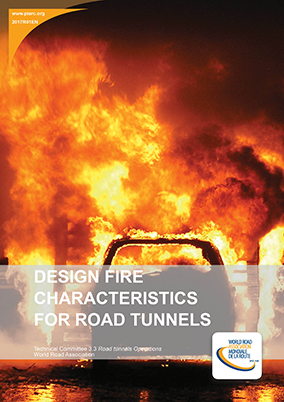Design fire characteristics for road tunnels

Fire safety in tunnels depends on an amalgam of systems and procedures designed to achieve the best outcome in the event of an incident. The "Design Fire", defined in terms of its magnitude, growth rate and duration, provides a basis for sizing the required systems and anticipating the operational measures that need to be in place. In the case of new tunnels, it may influence the choice of tunnel configuration or the use of additional systems to mitigate consequences.
A prescriptive approach has generally been adopted with design fires, formerly in a range up to a peak heat release rate of 30 MW. However, the experience of actual large tunnel fires and full-scale tests indicates that much larger fires may occur. The report presents the standards currently adopted in different countries, which vary from 20 to 300 MW.
Given the wide range of fire sizes experienced, it is evident that the selection of a design fire size for a particular tunnel is not straightforward. A consideration of several factors, such as the type of traffic allowed, the ventilation system, tunnel geometry and fire mitigation systems has to be taken into account. Even in a prescriptive approach, such considerations are weighed. To give more guidance on the process of choice, a methodology for a performance-based approach is presented in the report. The impact of the design fire on smoke management systems is also reviewed.
Information sheet
- Date: 2016
- Author(s): Comité technique 3.3 Exploitation des tunnels routiers / Technical Committee 3.3 Road Tunnel Operation
- Domain(s): Road Tunnel Operations
- Type: 2017R01EN - Technical Report
- PIARC Ref.: 2017R01EN
- ISBN: 978-2-84060-471-6
- Number of pages: 66